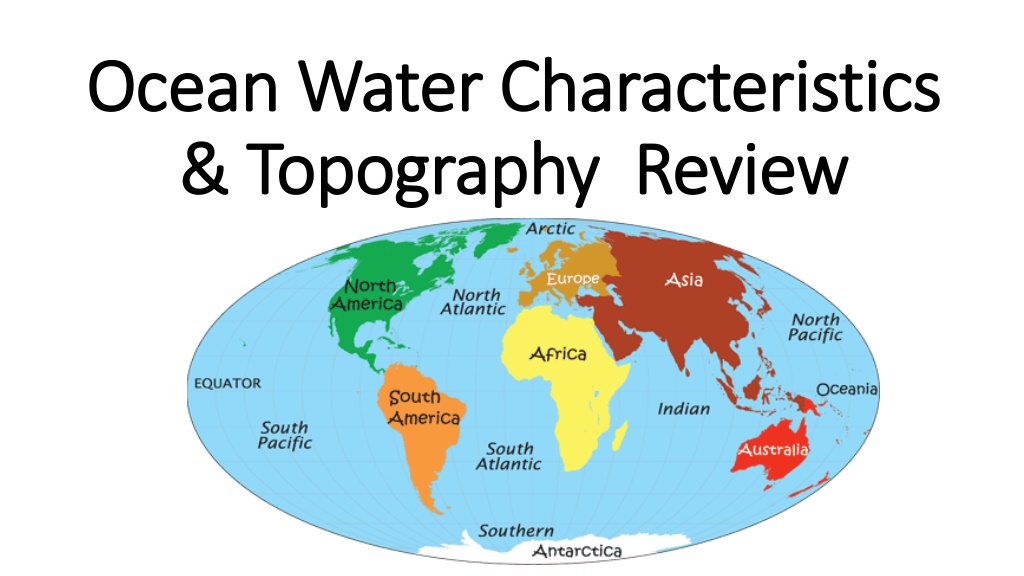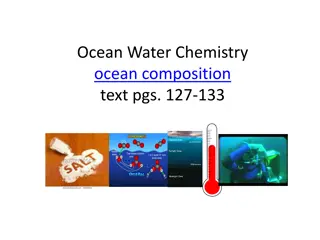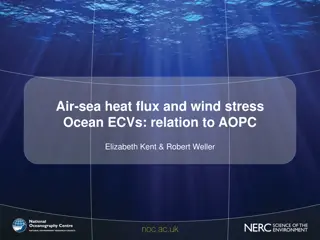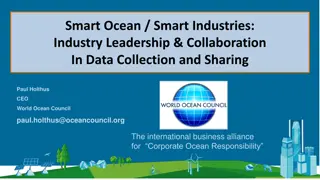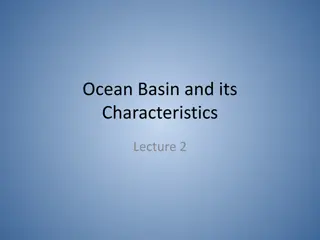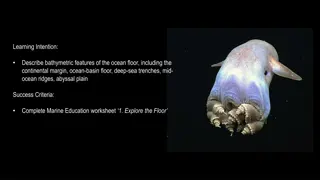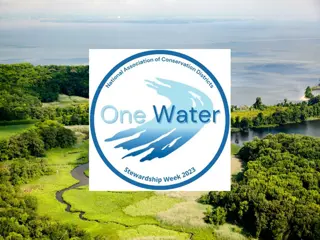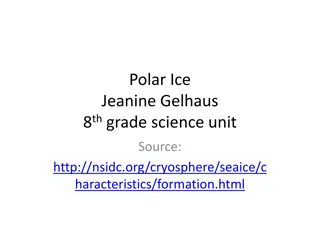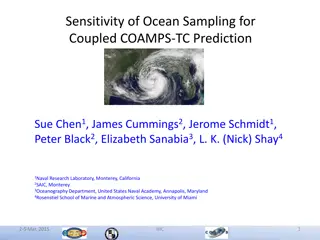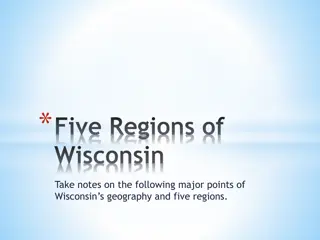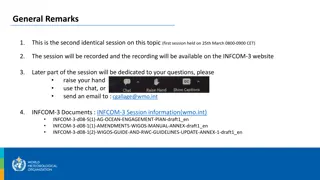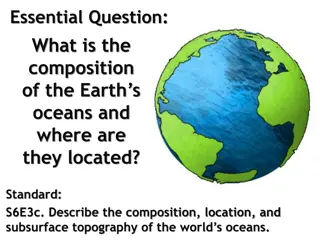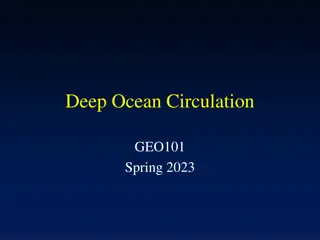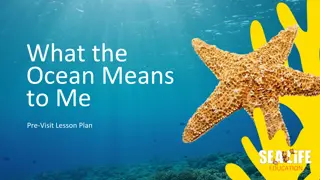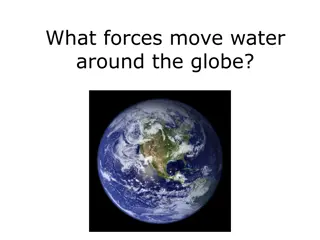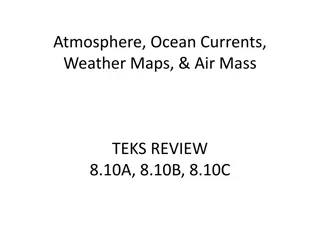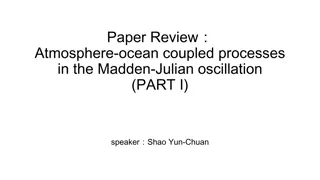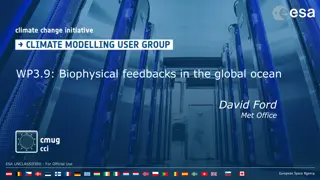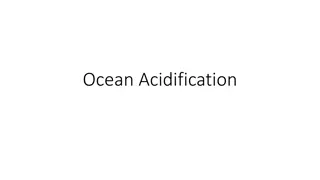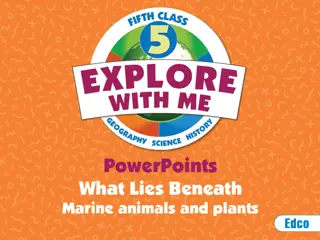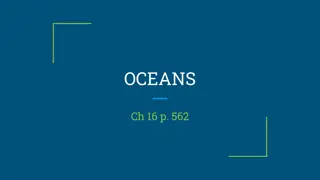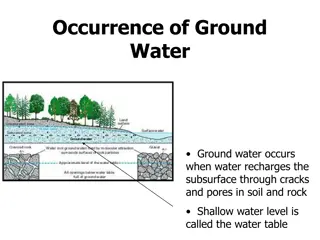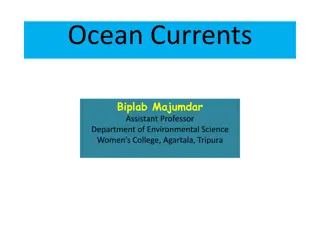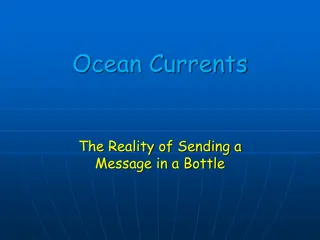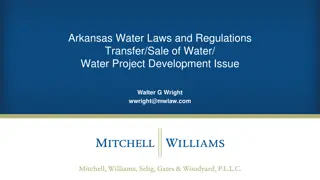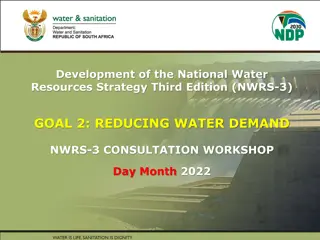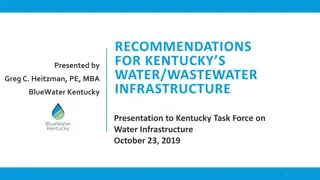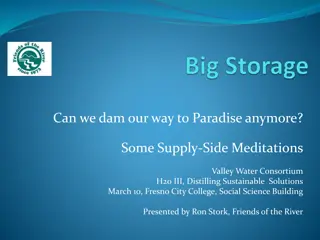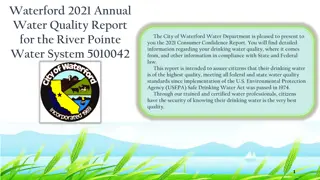Exploring Ocean Water Characteristics and Topography
In 1992, a crate of rubber duck toys fell into the Pacific Ocean, leading to unexpected discoveries about ocean currents and pollution. The North Pacific Gyre, home to the Great Pacific Garbage Patch, plays a crucial role in understanding ocean dynamics. Learn about ocean water properties, distribution, and environmental impacts in this engaging exploration.
Download Presentation

Please find below an Image/Link to download the presentation.
The content on the website is provided AS IS for your information and personal use only. It may not be sold, licensed, or shared on other websites without obtaining consent from the author. Download presentation by click this link. If you encounter any issues during the download, it is possible that the publisher has removed the file from their server.
E N D
Presentation Transcript
Ocean Water Characteristics Ocean Water Characteristics & Topography & Topography Review Review
Read the following and answer the questions on the next slide: In 1992, a crate of rubber duck toys fell from a ship in the middle of the Pacific Ocean, at the point marked with an X on the map below. Since then, the yellow ducks have floated off in many directions, and some are still riding the waves today. Some of the ducks have turned up on beaches in Hawaii, Alaska, South America, Australia, and the United States. A few went as far as Great Britain, and others have been found in arctic ice. About 2,000 of the ducks are going around in circles in the Pacific Ocean in a loop of currents called the North Pacific Gyre. This current circles between Japan and Alaska. With the help of the rubber ducks, scientists learned that it takes three years for the North Pacific Gyre to complete one loop. The Gyre is also home to a floating area of plastics and other trash known as the Great Pacific Garbage Patch. This growing area of garbage endangers animals in the ocean.
As the garbage in the North Pacific Gyre breaks down over time, heavier pieces will sink. When the heavier garbage settles, where is it most likely to end up? A. seamount B. abyssal plain C.mid-ocean ridge D.continental slope
Oceans cover nearly 71% of Earths surface. The ocean that contains 45% of all ocean water on Earth is located A.south of India B.around the Arctic Circle C.between Asia and the Americas D.between the Americas and Africa/Europe
An iceberg breaks off of a glacier and floats into the ocean. In the ocean, the iceberg begins to melt. Which temporary effect does this melting have on ocean water in the immediate area of the iceberg? A.The melting ice lowers the freezing point of the ocean water. B.The melting ice reduces the salinity of the ocean water. C.The melting ice releases the carbon dioxide stored in ocean water. D.The melting ice increases the acidity of the ocean water.
Ocean water is usually not used for drinking or watering crops. Which property of ocean water makes it less usable for drinking or watering crops than the water from rivers and streams? A.Ocean water contains salt. B.Ocean water contains sand. C.Ocean water is far away from many people. D.Ocean water has many organisms living in it.
Which two statements in the table are true about Which two statements in the table are true about the changing salt concentrations of ocean water the changing salt concentrations of ocean water? ? When Earth s ice increases, ocean water gets saltier. When Earth s ice increases, ocean water gets less salty. When ocean water evaporates, the water gets saltier. When ocean water evaporates, the water gets less salty. 1 A. 1 and 3 B. 1 and 4 C. 2 and 3 D. 2 and 4 2 3 4
North of the equator there is an area of the Atlantic Ocean that has high evaporation and little rainfall. How does this area most likely compare to other parts of the Atlantic Ocean? A.Its density is lower. B.Its salt content is greater. C.Its oxygen levels are more variable. D.Its pressure remains the same at different depths.
Short answer: Use at least one (1) complete Short answer: Use at least one (1) complete sentence to respond to the following. sentence to respond to the following. Describe the composition of ocean water, ie. compare the percentage of water to the percentage of salt.
Short answer: Use at Short answer: Use at least four (4) sentence to respond to the following. sentence to respond to the following. least four (4) complete complete Explain how an increase and a decrease in salinity can effect density of ocean water. Explain how an increase and a decrease in temperature can effect the density of ocean water.
